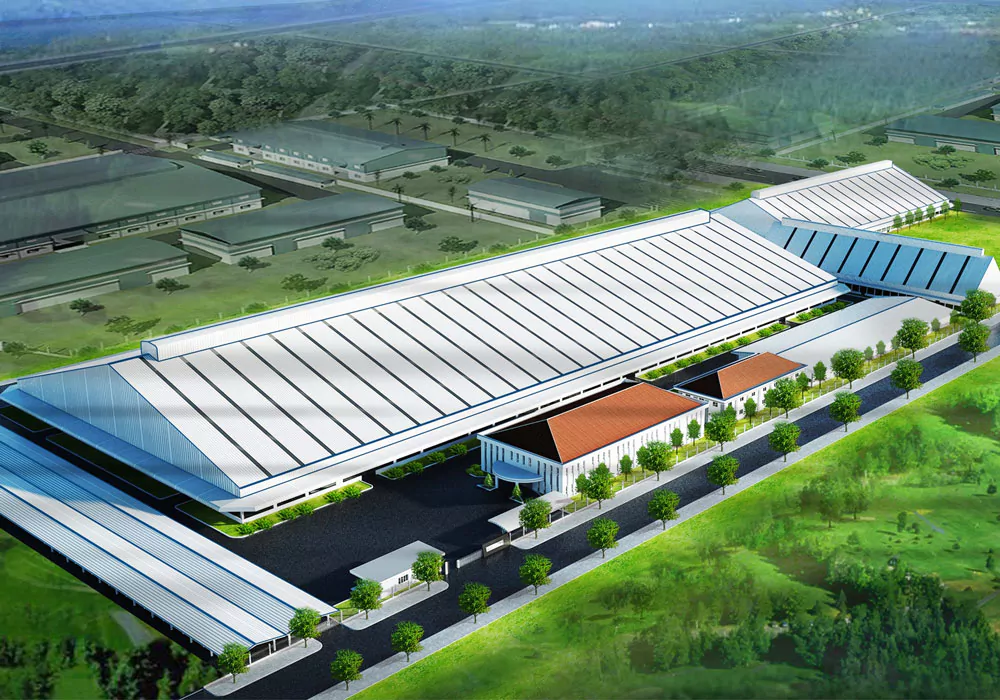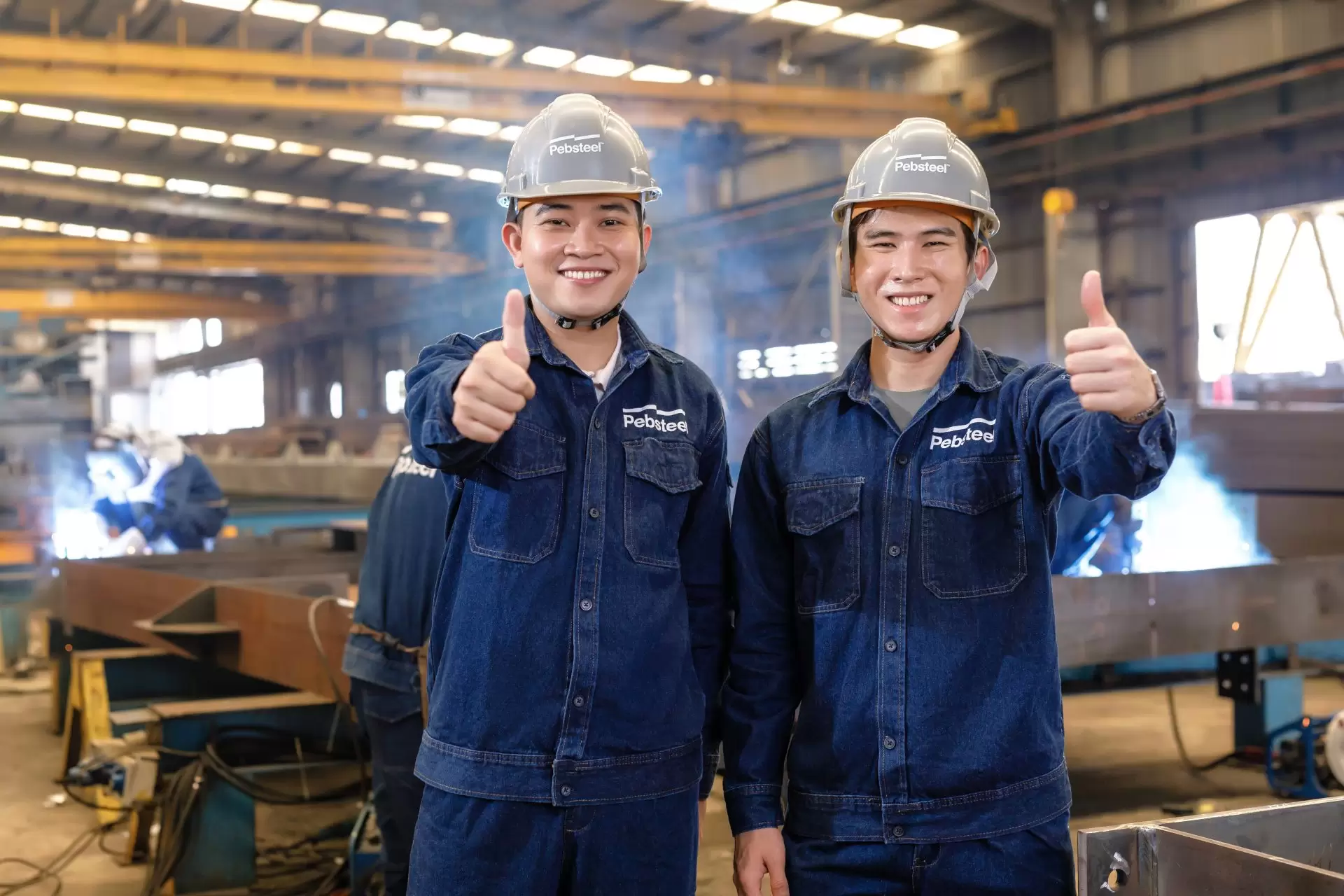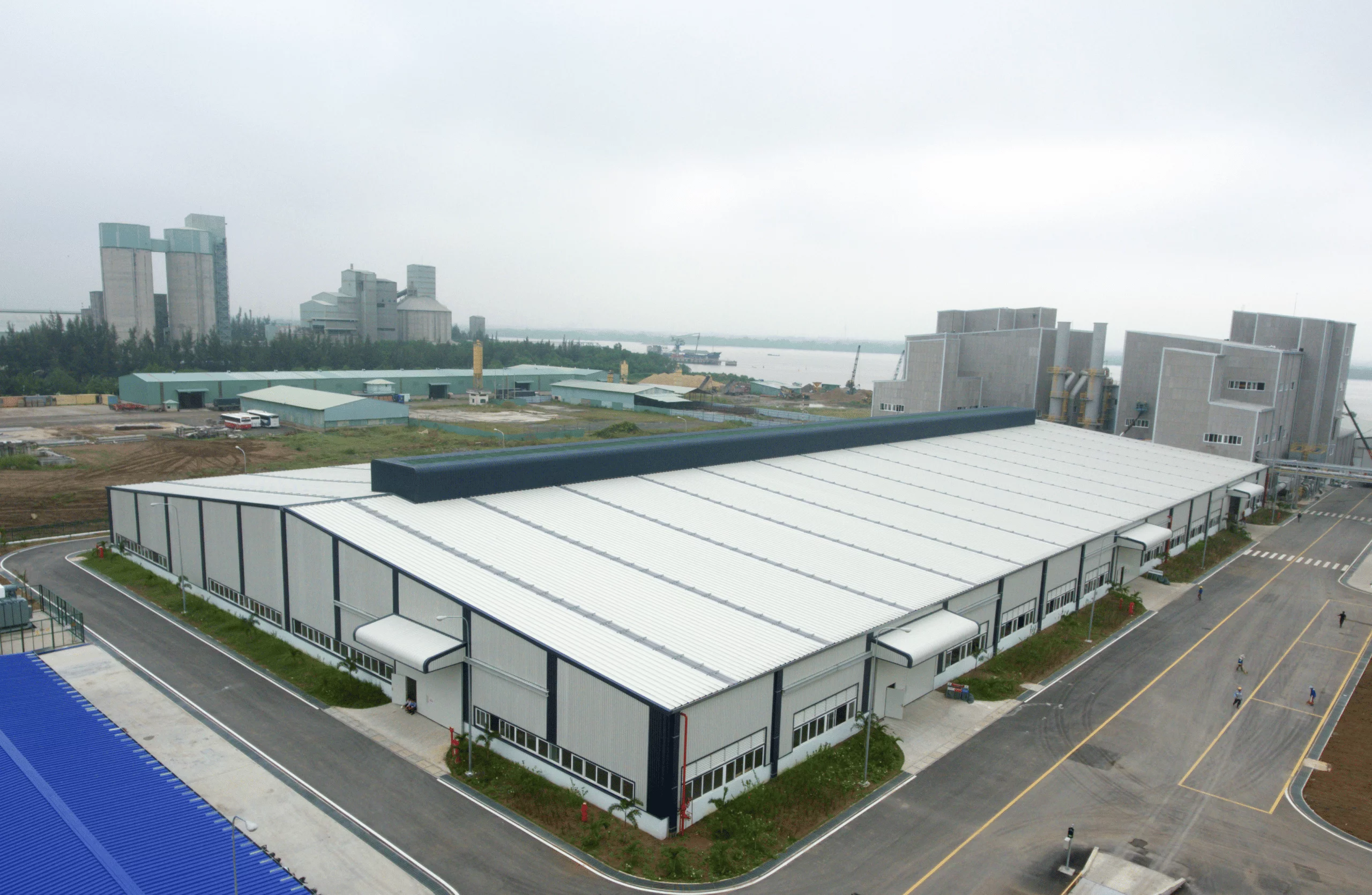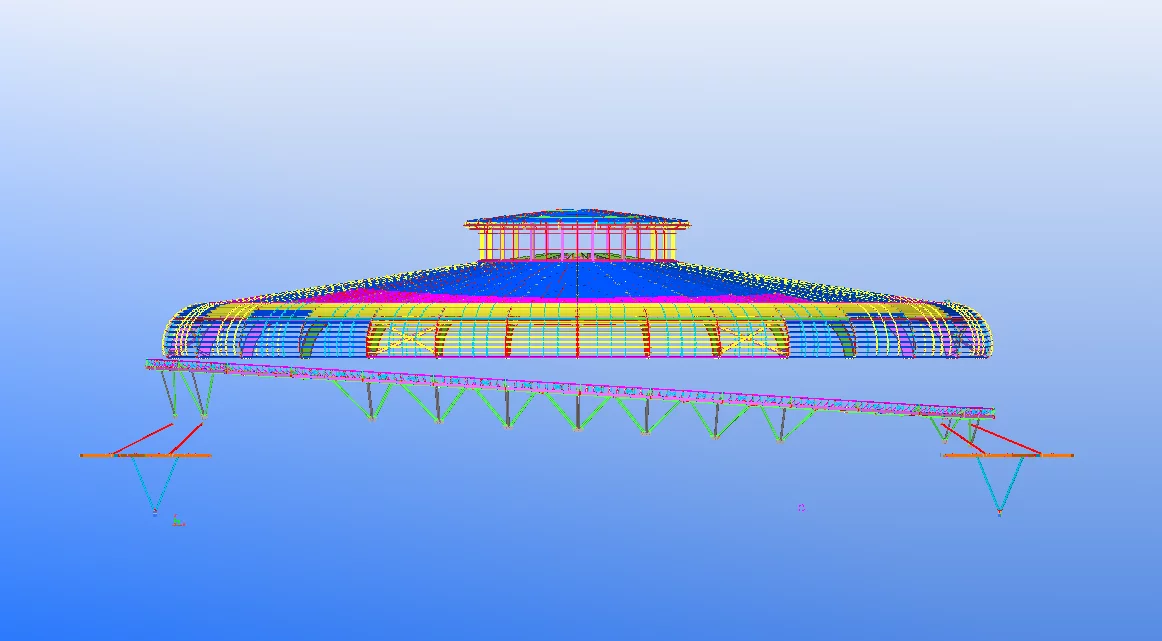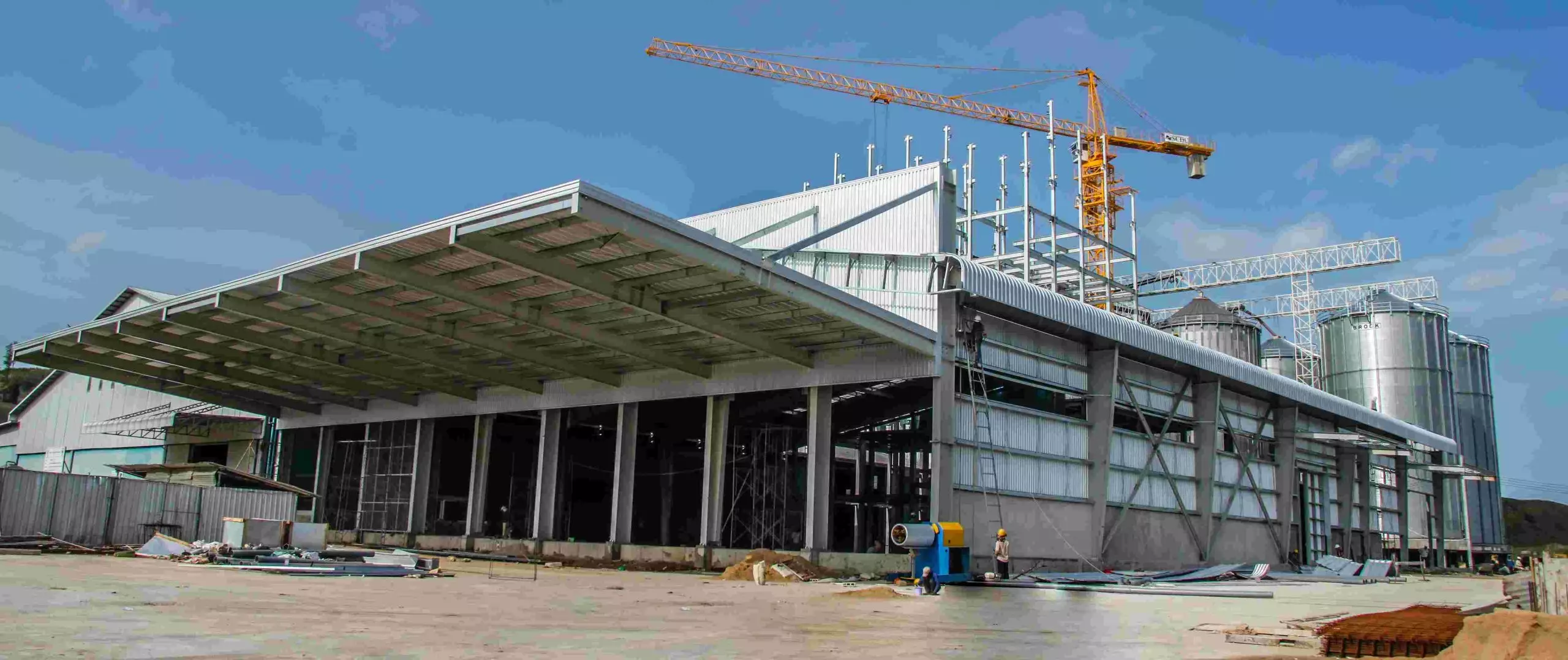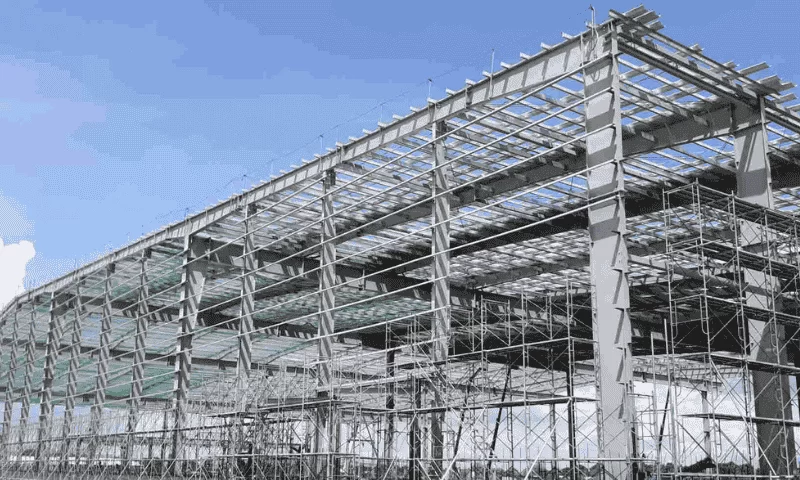As natural resources become more scarce due to climate change, green buildings are becoming more and more popular as eco-friendly architecture and design options. Prefabricated steel building construction can profit economically from the application of the green building model, which also helps to safeguard the environment and advance sustainable development. This article will delve into analyzing the concept of green building, the objectives and benefits of applying this model to the construction of prefabricated steel buildings, thereby helping investors and contractors make sound choices for their construction projects.
1. What Is a Green Building?
Green buildings, commonly referred to as environmentally friendly buildings, which are constructed, designed, and managed intending to reduce their negative environmental effects and make efficient use of available natural resources. Several well-known green building councils worldwide have provided their definitions and guidelines for this idea, but they all have environmental preservation and sustainable development as their main objectives. Here are the definitions of green building according to some renowned councils:
1.1. US Green Building Council (USGBC)
According to the USGBC, a green building is defined as one that is designed, constructed, and operated to minimize negative environmental impacts and utilize natural resources efficiently.
Evaluation criteria: The LEED (Leadership in Energy and Environmental Design) rating system evaluates buildings based on 7 key criteria:
- Architectural design
- Interior design
- Construction materials
- Indoor environmental quality
- Energy efficiency management
- Water efficiency management
- Innovation and creativity
1.2. Building Research Institute of England (BRE)
BRE defines a green building as a structure that is designed, built, and managed to reduce negative environmental impacts and enhance the quality of life.
Evaluation criteria: The BREEAM (Building Research Establishment Environmental Assessment Methodology) evaluation system evaluates buildingds based on 9 criteria:
- Land Management and Use
- Energy
- Water
- Building Materials
- Waste Management
- Transportation
- Pollution
- Health and Comfort
- Innovation
1.3. Vietnam Green Building Council (VGBC)
According to the Vietnam Green Building Council (VGBC), a green building is defined as a structure that is designed, constructed, and operated to minimize negative environmental impacts and use natural resources efficiently, while also enhancing the quality of life for its occupants.
Evaluation criteria: The LOTUS (Leadership in Energy, Environment and Nature) evaluation system evaluates buildings based on 10 criteria:
- Architectural design
- Interior design
- Construction materials
- Indoor environmental quality
- Energy efficiency management
- Water efficiency management
- Waste management
- Innovation and creativity
- Project management
- Community.
In general, green building councils all have the same view on the concept of green buildings, which are projects aimed at sustainable development, environmental protection and improving the quality of human life. However, each council has its own evaluation criteria system suitable to the actual conditions of each country and region.
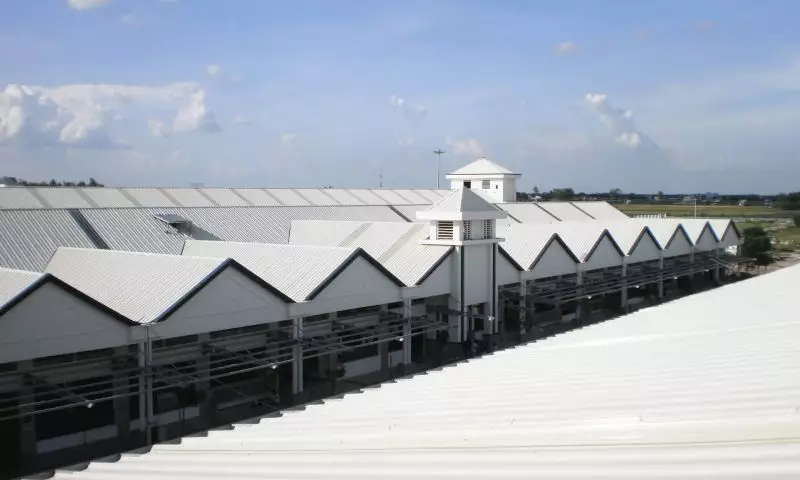
2. The Goal of Green Building in the Construction of Prefabricated Steel Buildings
2.1. About Environment
Minimize greenhouse gas emissions: Green buildings aim to minimize greenhouse gas emissions by utilizing energy efficiently, reducing the reliance on fossil fuels, and thereby decreasing the emission of carbon dioxide (CO2) and other greenhouse gases. This contribution helps mitigate climate change and protects the environment.
Saving water resources: Green constructions apply water-saving solutions such as using economical faucets, smart irrigation systems, reusing wastewater, helping to minimize groundwater exploitation, and protecting water sources and limiting water shortages.
Waste reduction: Green buildings encourage waste segregation, recycling, and the reduction of landfilled waste. This contributes to the protection of soil and groundwater resources.
Protecting biodiversity: Green constructions increase green areas, create habitat for plants and animals, and contribute to protecting biodiversity and natural ecosystems.
2.2. About Economic
Save operating costs: Green buildings efficiently use energy, water, and materials, helping to reduce operating, maintenance, and repair costs.
Increase real estate value: Green buildings are highly appreciated for their environmental friendliness and quality of life, attracting buyers and renters, and contributing to increasing real estate value.
Attracting investment: Businesses investing in green buildings often receive tax incentives, fees, and support policies from the government, creating a competitive advantage and attracting investment.
Job creation: The green construction industry is growing strongly, creating many job opportunities in the field of green building design, construction, operation, and maintenance.
2.3. About Society
Improve quality of life: Green buildings provide a safe, healthy, and comfortable living environment, which contributes to enhancing the health, well-being, and quality of life of the users.
Increase labor productivity: The green and clean work environment in green buildings helps employees focus better, reduces stress, and boosts their productivity.
Raising awareness of environmental protection: Living and working in green buildings helps raise environmental awareness among the users, contributing to the development of a green, clean, and beautiful community.
Community development: Green buildings often integrate common spaces and entertainment areas, contributing to connecting the community and promoting social activities.
2.4. About Health
Improve air quality: Green buildings use environmentally friendly materials, limit the use of toxic materials, contribute to improving indoor air quality, and reduce the risk of respiratory diseases.
Noise reduction: Green buildings are designed to minimize noise intrusion from the outside, creating a quiet and comfortable environment for the users. These conditions are clearly stated in steel structure design.
Enhance natural light: Green buildings maximize the use of natural daylight, allowing the occupants to have more exposure to sunlight, which is beneficial for their health and well-being.
Increase green area: Green plants in green buildings help purify the air, reduce stress, increase resistance, and create a feeling of relaxation for users.
2.5. About Education
Green buildings are a practical example that helps educate students and the community about the importance of environmental protection and sustainable development. They encourage users to conserve energy and water, as well as reduce waste generation.

3. Use sustainable construction materials in Green Construction
Using sustainable construction materials is an important factor in the construction of prefabricated steel buildings to minimize environmental impact and implement green construction. Below are details on commonly used sustainable materials:
3.1. Highly Durable Material
Recycled steel: Steel is a highly durable material, can be recycled many times, and is widely used in prefabricated steel building structures. Using recycled steel helps reduce iron ore mining, saves energy, and reduces waste.
Reinforced concrete: Reinforced concrete is a composite material with high durability, good bearing capacity and is commonly used in foundations, beams, and prefab steel floors. The use of reinforced concrete with recycled steel contributes to environmental protection.
Recycled wood: Recycled wood is an environmentally friendly material with high durability and beautiful aesthetics, often used for wall cladding, floors, doors, and windows in prefabricated steel buildings.
3.2. Recyclable Materials
Galvanized corrugated iron: Galvanized corrugated iron is a light material, easy to construct, and can be recycled after the end of its useful life. Galvanized steel is commonly used for roofs and partitions in prefabricated steel buildings.
Recycled aluminum: Aluminum is a lightweight, highly durable material and can be recycled many times. Recycled aluminum is used for windows, doors, and roof frames in prefabricated steel buildings.
Recycled glass: Recycled glass is an environmentally friendly material that can be recycled many times and is used for windows and partitions in prefabricated steel buildings.
3.3. Materials Are Sourced Responsibly
Local materials: Using locally produced materials helps minimize transportation costs and the environmental impact of transportation.
Certified materials: Choose materials with certification of origin, sustainable forest management, and environmentally friendly production to ensure quality and sustainability.
Reusable materials: Utilize old materials and scraps from other projects to reduce construction waste and save costs.
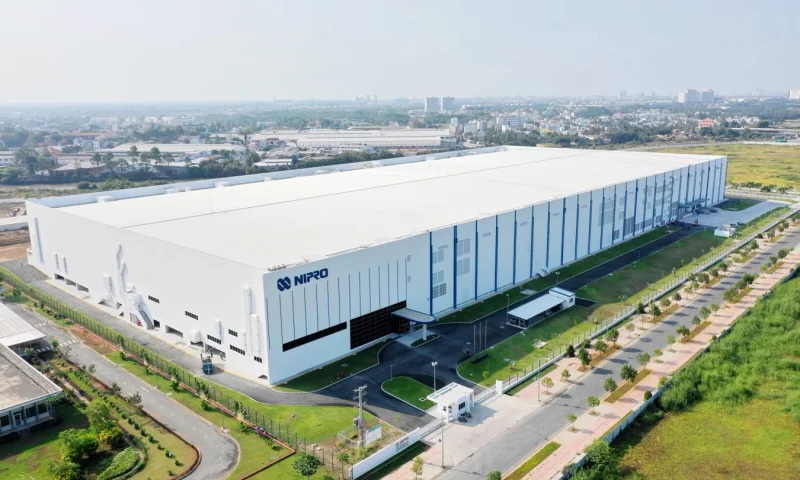
4. Deploy Energy-Saving Systems in Prefabricated Steel Building Construction
Green buildings in prefabricated steel construction aim to achieve energy efficiency, minimize greenhouse gas emissions, and protect the environment. The deployment of energy-saving systems plays a crucial role in accomplishing these goals. The following are details on the energy-saving systems commonly used in prefabricated steel buildings:
4.1. Heating, Ventilation, and Air Conditioning (HVAC System)
Use an efficient HVAC system: Choose an HVAC system with a high energy efficiency ratio (EER), using inverter technology to adjust fan and motor speeds, helping to save energy.
Take advantage of natural ventilation: Design windows and roofs appropriately to catch natural wind, and minimize the use of fans and air conditioners.
Effective insulation: Use insulation for the roof, walls, and floors to minimize the amount of heat transferred into the home, helping the HVAC system operate more efficiently.
4.2. Lighting Systems
Use energy-saving LED lights: Replace fluorescent and incandescent lights with LED lights that have high lighting efficiency, long lifespan, and consume less energy.
Install a smart lighting control system: Use light sensors and motion sensors to automatically turn lights on/off when needed, helping to save energy.
Take advantage of natural light: Design large windows to receive natural light, minimizing the use of artificial lighting.
4.3. Hot Water Heating System
Use a solar energy system: Install a solar power system to provide energy for hot water heating, minimizing the use of fossil fuels.
Use an energy-efficient water heater: Choose a water heater with a high energy efficiency ratio (EER), using energy-saving technology.
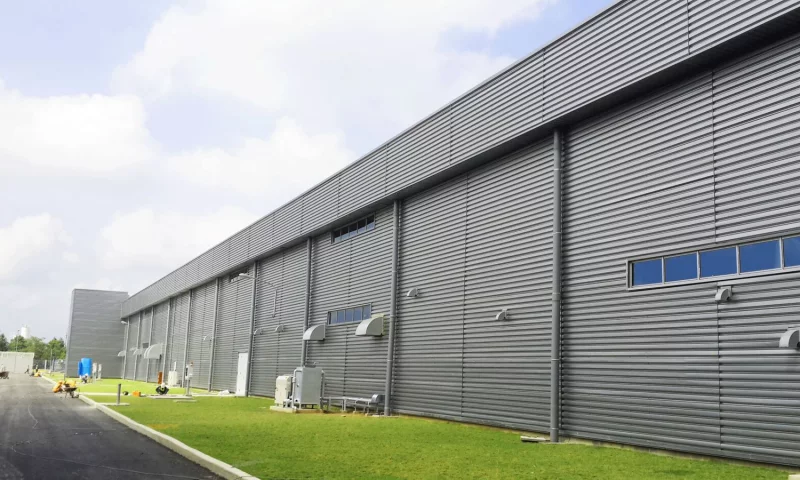
5. Water Conservation Techniques in Prefabricated Steel Building Construction
Water conservation is an important element in green building to reduce water usage, protect precious water resources, and contribute to environmental protection. Applying water conservation techniques in the construction of prefab steel buildings brings many practical benefits, helping to significantly reduce water use. Below are details on commonly used water conservation techniques:
5.1. Collect Rainwater
Installation of rainwater harvesting systems: The system includes gutters, rainwater storage tanks, and a water filtration system. The collected rainwater can be used for various purposes such as watering plants, washing vehicles, and cleaning the building, as well as supplementing the domestic water supply.
Use of permeable materials: Lining the garden and roofs with permeable materials such as gravel or permeable bricks to increase the ability to collect and infiltrate rainwater.
5.2. Reuse Greywater
Install a greywater reuse system: Greywater from sources such as laundry water, hand sanitizer, and bath water is processed through a filtration system and can be used for purposes such as watering plants and cleaning buildings.
Use a separate greywater discharge system: Design a separate greywater discharge system to guide greywater to the collection and treatment system, limiting the discharge of greywater into the domestic wastewater system.
5.3. Use Plumbing Equipment Effectively
Install an economical faucet: Use a faucet with low water flow, with a valve to adjust the water volume, to help reduce water usage.
Install water-saving toilets: Use toilets with low flushing capacity, using efficient flushing technology.
Install a water-saving showerhead: Use a low-flow showerhead with a foaming nozzle to help reduce water usage.
Repair leaky faucets and water pipes: Water leaks are the cause of significant water loss. Leaky faucets and water pipes should be checked and repaired promptly.
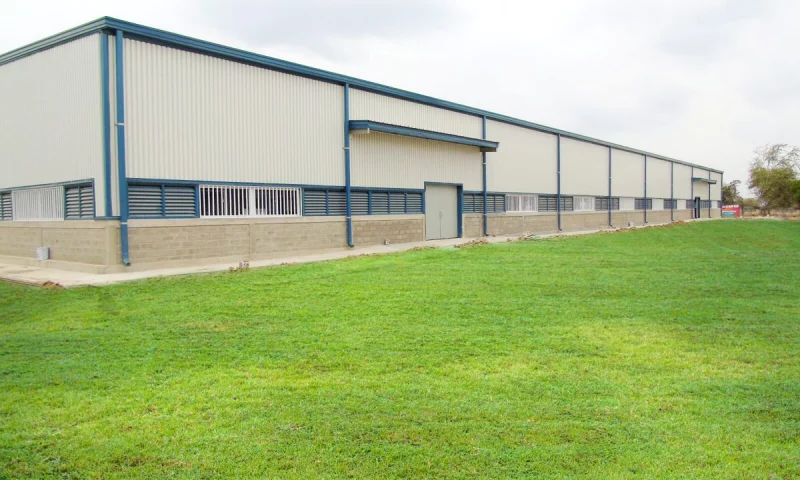
Numerous practical advantages to the environment, society, and enterprises result from using the green building model while constructing prefabricated steel buildings. Selecting prefabricated steel structures for environmentally conscious building practices helps to preserve natural resources, reduce adverse effects on the surroundings, and encourage sustainable growth.
Hopefully, this article has provided you with useful information about the concept, goals, and benefits of green building when applied to the construction of prefab steel buildings. For comprehensive solutions in prefabricated steel building construction and reputable structural steel fabricator, please contact Pebsteel via email at marketing@pebsteel.com.vn or phone at (+84) 908 883 531 for immediate assistance!
*** This article is intended to provide general information about the pre-engineered steel building and steel structure industry only. For further details or clarification based on your needs, please contact Pebsteel directly.






